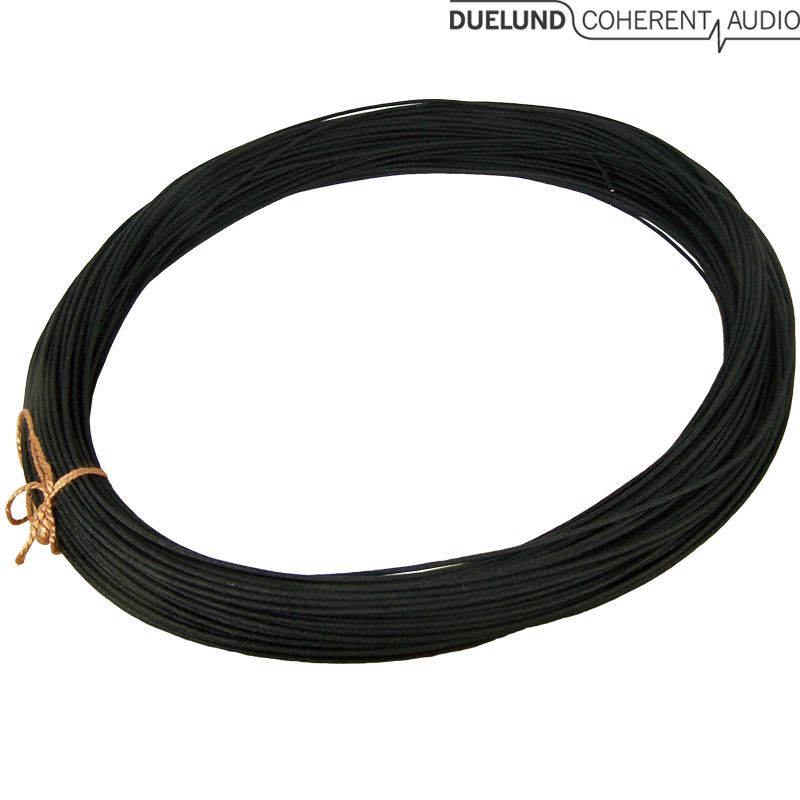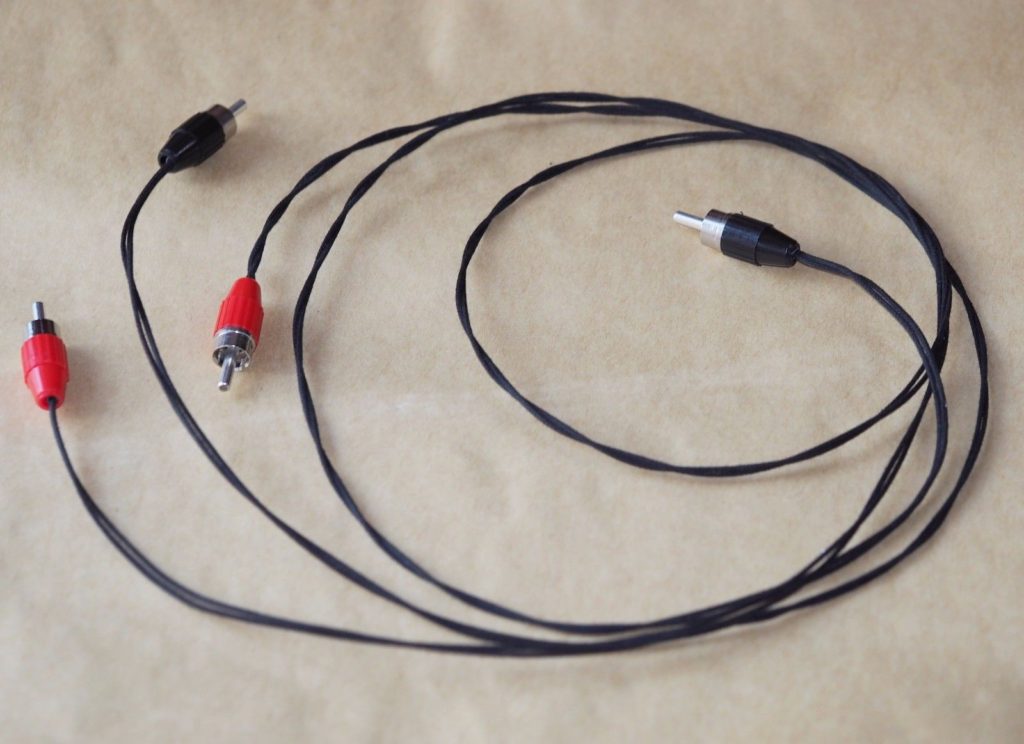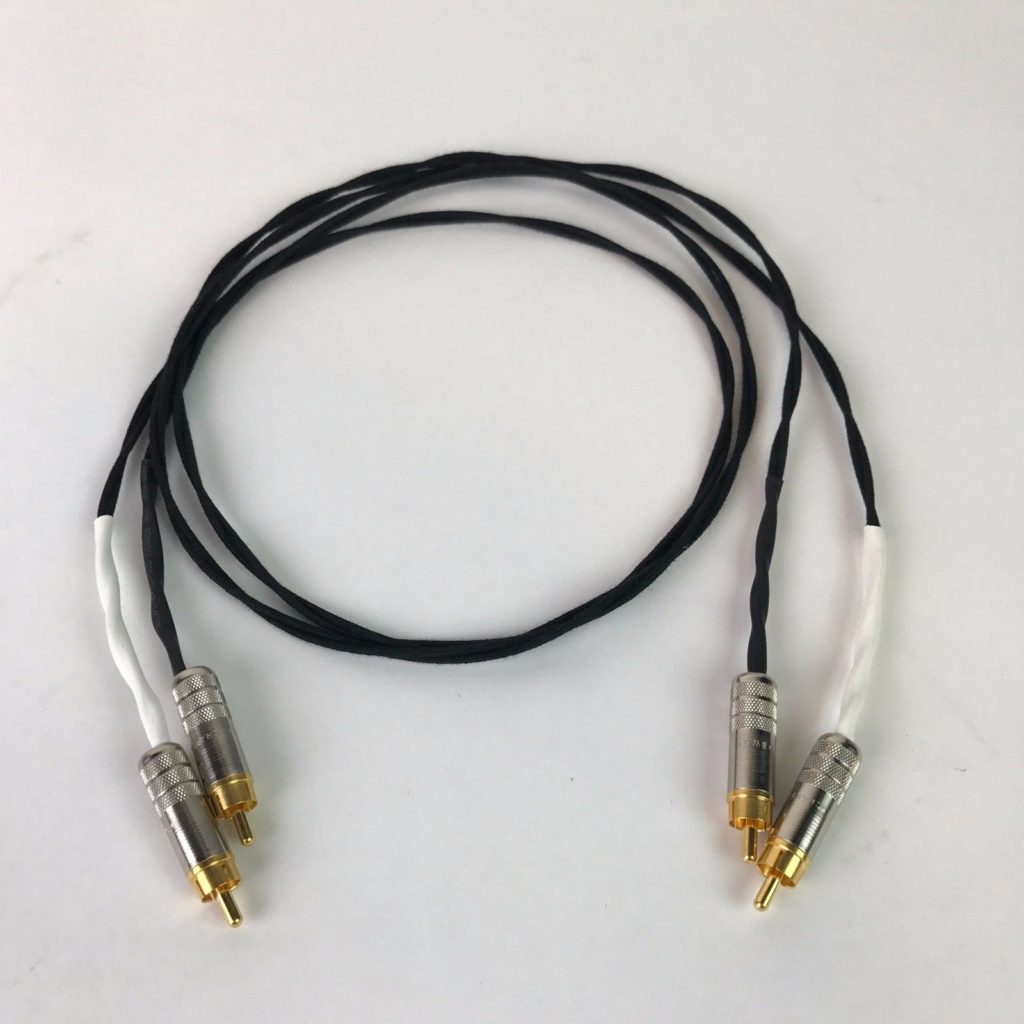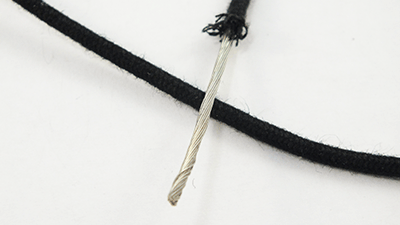
A little over a year ago when writing about the Duelund DCA-16GA tinned-copper wire I said,”I’m a little late to this game, but let me say better late than never. I am an avid reader of Jeff Day’s blog, Jeff’s Place. I wrote three short pieces about that wire and in the end stayed with my High Fidelity Cables Ultimate Reference cables. Not that I thought they were in any way 140 times better, but I already had them, and with the Pass Labs XA30.8 powering my system, I thought the HFC cables were better. You can read Part III of my review of this wire here.
After the Rocky Mountain Audio Fest, I took out my Pass Labs amp and the Emia Ultimate Remote Autoformer and replaced them with the little one-watt Linear Tube Audio MZ2-S amp. This amp is a new and improved release of the Berning micro-ZOTL Personal Amplifier that has been out of production since 2008. When listening to this little integrated amp, I was blown away, but something clicked in my head, and I asked myself where my DCA-16GA speaker wire was. It was upstairs in my video/digital system where I had first reviewed this amp. I took it out of the upstairs system and put it in the reference system.
I was very impressed that the tonal qualities of the music had improved. It was transparent and at the same time, the timbre was more natural and the music had even had more texture. It was easier to hear the recorded space, by space I don’t mean that artificial “phasey” sound, but I could hear a recorded space that sounded almost solid. The system sounded more harmonically correct, which makes for a more enjoyable and satisfying listening experience.
I was so impressed that I asked Jeff Day what he was using in his main system for interconnects and speaker wires. He shared with me that he had found it somewhat system dependent, but for his Tannoy/Vintage McIntosh system he was using Duelund DCA-12GA for speaker wire and shielded Duelund DCA-20GA cables that were grounded at the source end from the SUT to the preamp and unshielded Duelund DCA-20GA from the preamp to the amplifiers. That was good enough to get me started. I got on Parts ConneXion’s website and ordered some DCA-12GA, 20GA and just for the heck of it, some 26GA.

Duelund DCA-26GA
I had some unshielded interconnects made from the DCA-16GA, 20GA, and 26GA. I’m waiting for a couple of shielded 20GA and 26GA phono cables to be made. Until then I’m using my Audience Au24 SX High Z Phono (DIN to RCA) cable. I started by installing the DCA20-GA interconnects in my reference system after they had been cooked for four days. Then I put the DCA-12GA’s on the cooker for a few days and then in my video/digital system for four days of being played for 24/7.

Duelund DCA-20GA
I’ll get back to you with some final results in a while, but let me tell you how my system sounded with the DCA-20GA interconnects replacing the High Fidelity Ultimate Reverence cables. Let’s start with the changes I made. I removed all the High Fidelity Cables from the system a few days before and put all Audience Au24SX cables in the system. The reason for this is because the High Fidelity Cables are magnetic cables and I wanted all the magnetism removed from the system for several days, before putting all Duelund cables in. This included removing the wonderful High Fidelity Cable power cables from the system and replacing them with Audience PowerChords.
After a few days, I put the DCA-20GA interconnects in and left their 16GA wire from the amps to the speakers. By the way, if you haven’t been in on the buzz about Duelund tinned-copper wire when used as speaker wire, they sound best with no connectors on them. You just place the bare wire around the binding post and tighten.

Duelund DCA 12GA
Everything I said above about putting in the Duelund speaker cables was even more apparent. There was a driving intensity to the sound with great flow and huge dynamic contrast. There were even more beautiful tonal colors, dynamic prowess, timbral realism with a wonderful vivid presence and a compelling portrayal of beat and tempo that distinguishes them from non-tinned copper or silver cables. They made my system immensely satisfying for listening to music.
Spatially, with both mono and stereo records, the DCA cables placed things that needed to be placed forward, such as voices and solos on instruments. With this combination of Duelund wire, my system had a wonderful sense of presence, and there was a little extra punch to the attack. Plucked strings especially sounded more real with the DCA wire being used in my system.
I listened to this setup for about three days as the DCA-12A speaker wire continued to play upstairs. Then, I put the DCA-12A in to replace the 16A and the first thing I noticed was that voices sounded a little strident so, I put them back on the burner for another day, and then let them play all day before I sat back down to listen that evening. Gone was any hint of stridency, and in its place was a wonderfully musical sound.
So how does the 12GA compare to the 16GA? Well, it shares the richness and warmth, but the 12GA is more open, which enables it to be more articulate as well. The system also had a better tempo with the 12GA with a real alive sound. The upper midrange and treble areas were more substantial and beautiful. They were not excessively sparkly nor unrealistically airy, just beautiful. Flutes and violins on classical music seemed correct and very moving. Fiddles and other bluegrass instruments had the perfect blend of physicality, air and most of all drive even in the treble regions. With the DCA-12GA speaker wire and the DCA-20GA interconnects in my system, it had momentum and drive from the bottom octaves all the way up.
Conclusion
This December, Becky and I went to three live performances in San Francisco at three different, and arguably, three world-class venues. The first was Dianne Reeves’ Christmas performance at the SF Jazz Center; the second was to see John Adams’ new opera, Girls of the Golden West at the War Memorial Opera House; and lastly, we went to the first, and hopefully annual, Holiday Soul with the San Francisco Symphony at Davies Symphony Hall. So we heard three different venues with three different types of music, and many different performers, and I came away convinced that the sound I get from my system with the Duelund wire and the Berning’s LTA MZ2-S has tone and richness that is much more like live music.
Depending on where my seats were and how the performers were arranged on the stage, things that we refer to in the audio world as imaging and sound staging changed at every performance. The thing that did not change was the rich tonal colors of the music around the two octaves below Middle C. To my ear, many high-end systems are thin in this frequency range. This can give you a sense of speed and detail and an increased sense of depth, which is nice, but not at the expense of sounding less like live music. My system reproduces this frequency range better with this combination of Duelund cables and the LTA amp than ever before.

The audience cables are much much better then the dueland.
You can not compare the cables, audience sx are one of the best cables at this moment.
Thanks for reading our site. I would agree with you that the Audience SX cables are among the very best at any price. I am using their tonearm cable and their power cables. With the Pass Labs amp, I prefer an all Audience system, but with the LTA I prefer the Duelund. All, I can say is that we all have to trust our ears and use what sounds best in our system. I can’t imagine any system where the Audience SX cables wouldn’t sound wonderful and I can say that I have heard systems that sound incredible with the Duelund and those that did not.
jack
I read his article on the duelund cables and you writhe this sentence: ” started by installing the DCA20-GA interconnects in my reference system after they had been cooked for four days. Then I put the DCA-12GA’s on the cooker for a few days and then in my video/digital system for four days of being played for 24/7″. Can you tell me how to cook these cables?
Regard Virginio
There is such a thing called a cooker that is used to “cook” wire. You can look it up on the internet. For most people, however, they get the same results by continuously playing the cable in a system for a period of time. This only works if you have multiple systems and can do this.
I have a similar system to yours , using the Microzotl & Rethm Speakers … I have the 12 awg Duelund which I preferred as speaker cables to 16 awg and 20 awg un-shielded IC. The presentation is very balanced. However .I lately build a shielded IC with 20 awg as Hot wire and 16 Awg as the ground.
I seem to like the tonal colour and presence of the 16 awg. It sounds more involving when you add 16awg in the chain. Did u try changing the 20awg IC to 16awg IC (unshielded) with 12awg as speaker cables ? Any preferences ?
Do you currently suggest the 12Awg or the 16Awg Duelund for a speaker cables? What spade connectors do you recommend?
Thank you for yor continued work and insight.
He clearly stated bare wire, as Jeff Day and other did. Read it through.
Was Duelund DCA20 shielded interconnect special order or you did shielding on your own? If you did it on your own did you use braided, foil or both?
I asked The Beatnik, and he thinks he ordered them that way.
Did you try soldering the wire to spades or other connectors?… For “bare wire” speaker cables, do you recommend soldering the ends to keep the strands together?… I’ve been using the DCA 20ga in RCA interconnects with spectacular results in my tube preamp and amp for a year. It replaced the Shunyata Venom interconnects. More air, detail, openness, and transparency with the DCA 20ga.
No. I didn’t do that.